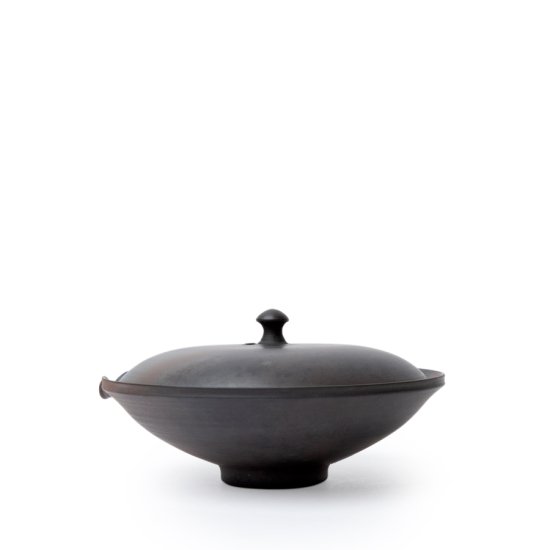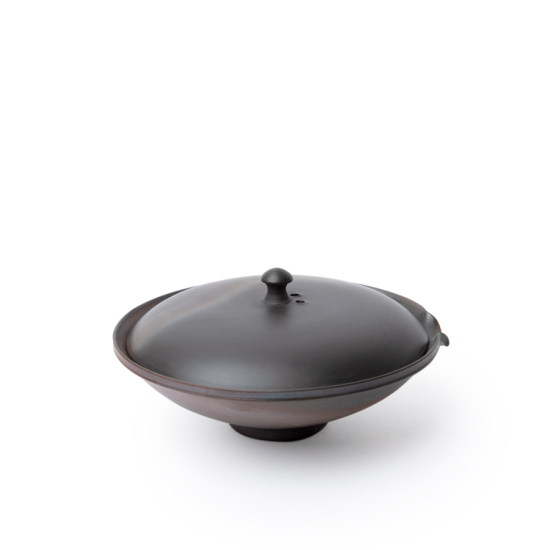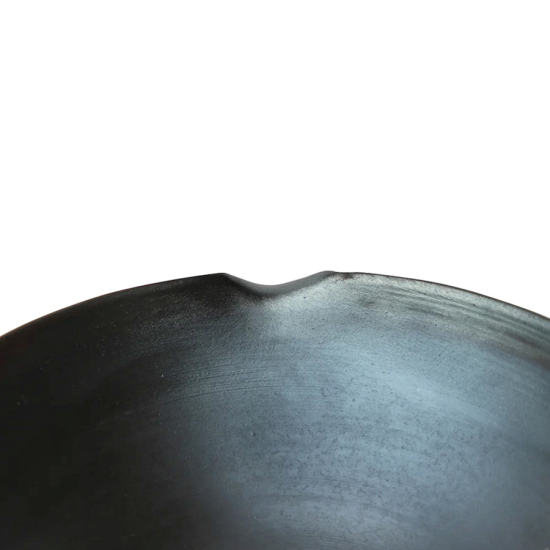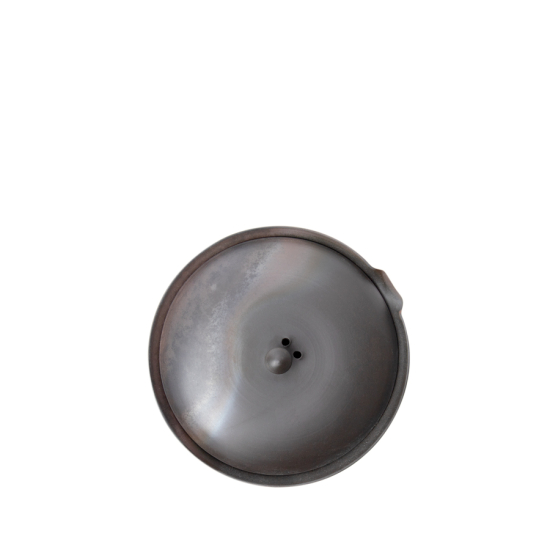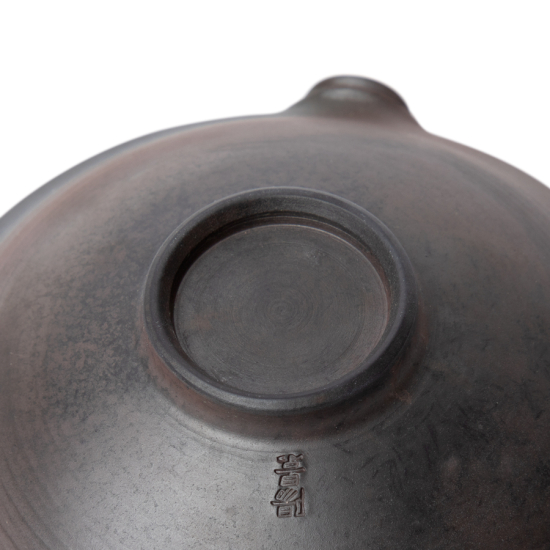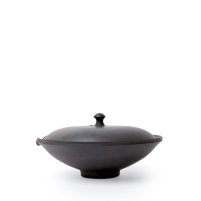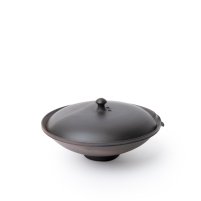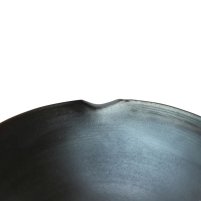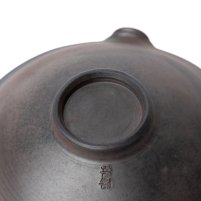This shiboridashi was made by Master Yōkei in a small, traditional pottery studio (kamamoto) in Tokoname, where each step of the production process is carried out by hand. In this traditional region for ceramics, less than 200 studios exist today.
SHIBORIDASHI
TOKONAME
YŌKEI YOHEN
Yokei
SKU
4848
Yoshi En has recently grown out of Sunday Natural to become an independent premium tea store. As part of this transition, some products may still be shipped in Sunday Natural packaging.
Original Japanese, hand-turned, handle-free teapot (shiboridashi) by the well-known master Yōkei from Tokoname, ideal for the preparation of sophisticated Japanese green tea. Special combination of reduction and oxidation distillation for random colouring (yohen; 窯 変) 70ml
| Type | Tokoname-yaki shiboridashi |
| Origin | Tokoname, Aichi, Japan |
| Studio/Artist | Yōkei |
| Volume | 70ml |
| Material | Ceramic |
| Glaze | Yohen |
| Decoration | Inka flower stamp |
| Production | Potter's wheel (rokuro) |
| Strainer | - |
| Artist's Stamp | Yes |
| Packaging | Gift box |
In stock



